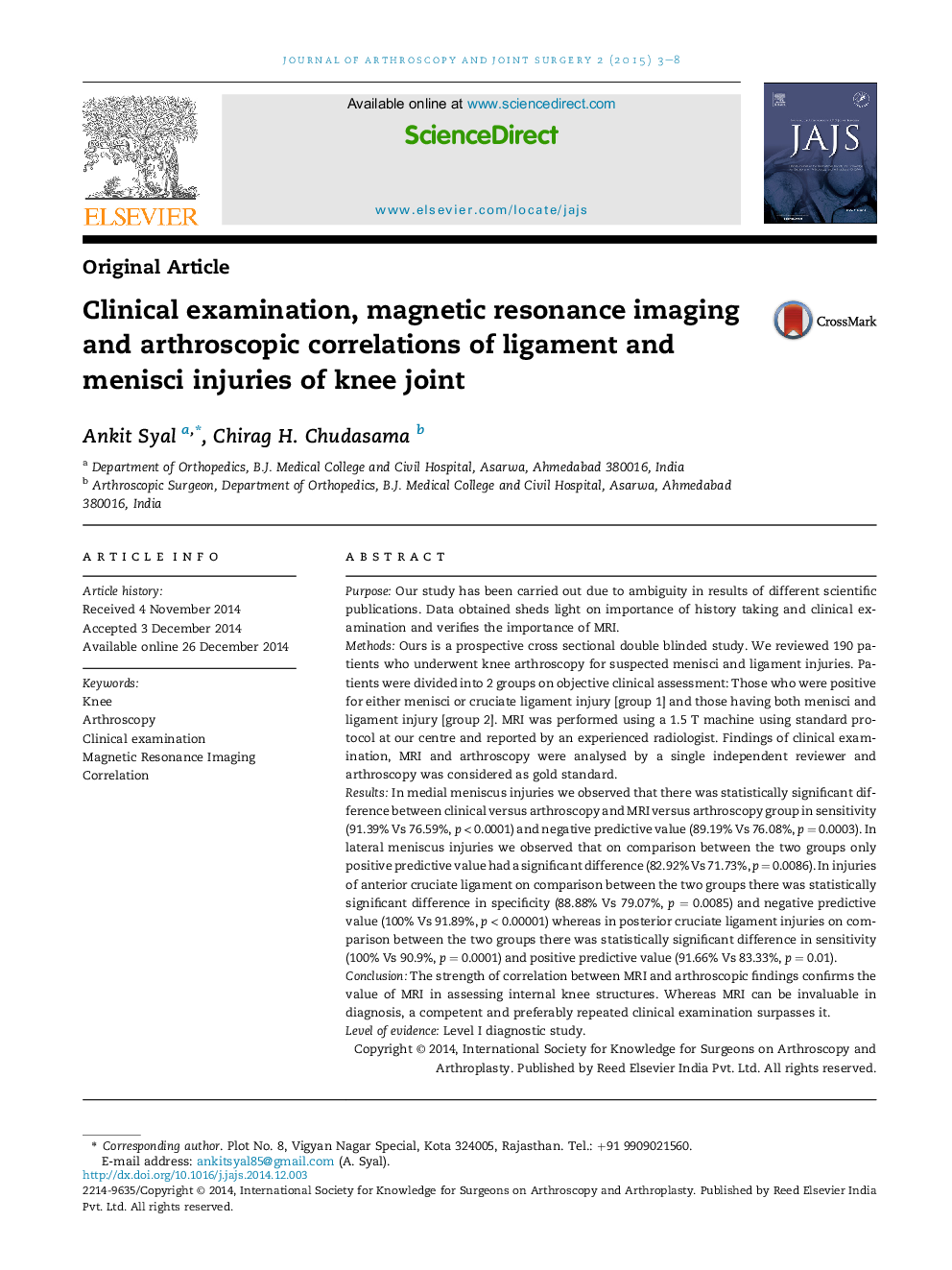| کد مقاله | کد نشریه | سال انتشار | مقاله انگلیسی | نسخه تمام متن |
|---|---|---|---|---|
| 3245120 | 1206703 | 2015 | 6 صفحه PDF | دانلود رایگان |
PurposeOur study has been carried out due to ambiguity in results of different scientific publications. Data obtained sheds light on importance of history taking and clinical examination and verifies the importance of MRI.MethodsOurs is a prospective cross sectional double blinded study. We reviewed 190 patients who underwent knee arthroscopy for suspected menisci and ligament injuries. Patients were divided into 2 groups on objective clinical assessment: Those who were positive for either menisci or cruciate ligament injury [group 1] and those having both menisci and ligament injury [group 2]. MRI was performed using a 1.5 T machine using standard protocol at our centre and reported by an experienced radiologist. Findings of clinical examination, MRI and arthroscopy were analysed by a single independent reviewer and arthroscopy was considered as gold standard.ResultsIn medial meniscus injuries we observed that there was statistically significant difference between clinical versus arthroscopy and MRI versus arthroscopy group in sensitivity (91.39% Vs 76.59%, p < 0.0001) and negative predictive value (89.19% Vs 76.08%, p = 0.0003). In lateral meniscus injuries we observed that on comparison between the two groups only positive predictive value had a significant difference (82.92% Vs 71.73%, p = 0.0086). In injuries of anterior cruciate ligament on comparison between the two groups there was statistically significant difference in specificity (88.88% Vs 79.07%, p = 0.0085) and negative predictive value (100% Vs 91.89%, p < 0.00001) whereas in posterior cruciate ligament injuries on comparison between the two groups there was statistically significant difference in sensitivity (100% Vs 90.9%, p = 0.0001) and positive predictive value (91.66% Vs 83.33%, p = 0.01).ConclusionThe strength of correlation between MRI and arthroscopic findings confirms the value of MRI in assessing internal knee structures. Whereas MRI can be invaluable in diagnosis, a competent and preferably repeated clinical examination surpasses it.Level of evidenceLevel I diagnostic study.
Journal: Journal of Arthroscopy and Joint Surgery - Volume 2, Issue 1, January–April 2015, Pages 3–8
